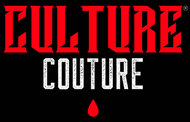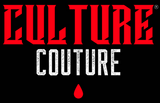Learn about the origins of streetwear and its close relationship with street art and graffiti. Dive into the subcultures and find out why they still influence fashion today.
The Origins of Streetwear and its Close Relationship with Street Art and Graffiti
Streetwear fashion is a style that has its roots in the subcultures of street art, graffiti, and hip-hop. The origins of streetwear can be traced back to the 1970s and 80s, when young people in New York City started creating their own unique style that combined elements of punk, hip-hop, and skate culture. Over time, this style evolved into what we now know as streetwear.
5 Pointz
5 Pointz: The Institute of Higher Burnin' or 5Pointz Aerosol Art Center, Inc., mainly referred to as simply 5 Pointz or 5Pointz, was an American mural space at 45–46 Davis Street in Long Island City, Queens, New York City. When the building opened in 1892, it housed the Neptune Meter factory, which built water meters.Jerry Wolkoff, a developer, bought the property in the early 1970s. He originally planned to develop the building, but instead leased the space to companies. Wolkoff started leasing the space as artists' studios in the 1990s. The building's exterior was covered with street art, and the building became renowned worldwide for the art on its wall. Originally known as Fun Factory, the building was renamed "5 Pointz" in 2002 after Wolkoff hired the graffiti artist Jonathan Cohen to curate the exterior murals. The new name represents the confluence of the five boroughs of New York City. The murals were exhibited mainly on the exterior walls of the building, while the interior was occupied by about 200 artists' studios.
In 2013, Wolkoff made the controversial decision to demolish 5 Pointz and replace it with a residential complex, resulting in protest. Without giving any warning, Wolkoff had the murals whitewashed overnight, which led the artists to file a lawsuit against Wolkoff. The 5 Pointz building was demolished completely in 2014. Construction on the new building complex started in 2015, with expected completion in early 2020. In February 2018, Wolkoff was ordered by a judge to pay the maximum amount of statutory damages: $150,000 each for 45 works, for a total of $6.7 million in damages to 21 artists.
Street Art and Graffiti
Street art and graffiti have always played a major role in the development of streetwear fashion. In the early days of streetwear, young people would often use spray paint to create bold, eye-catching designs on their clothing and accessories. These designs would often feature political or social messages, and were seen as a way for young people to express themselves and make a statement.Street art and graffiti are two of the most vibrant and dynamic forms of artistic expression. Both forms have their roots in counterculture and subcultures, and they continue to evolve and grow in popularity. From the graffiti-covered walls of New York City in the 1970s to the stunning street murals in cities across the world, street art and graffiti have become a cultural phenomenon that has captured the imagination of people around the globe.
Street art and graffiti have also had a significant impact on the art world. They have inspired countless artists and art movements, and they continue to challenge the boundaries of what is considered "art." Street art and graffiti have also helped to democratise the art world, making it possible for people from all walks of life to participate in the creation of public art.
Streetwear and Subcultures
Streetwear fashion has always been closely associated with subcultures, and it continues to be so today. From hip-hop to punk, streetwear has been shaped by the various subcultures that have embraced it over the years. These subcultures often have their own unique style and aesthetic, which is reflected in the streetwear fashion that they wear.
Streetwear and subcultures have a rich and diverse history. They can be traced back to the early days of punk rock and hip hop, when young people used fashion as a way to express their identity and rebellion against the status quo. Throughout the 1980s and 1990s, streetwear emerged as a new style of fashion, inspired by hip hop, punk rock, and skate culture.
In the early 2000s, streetwear became more mainstream and started to gain widespread recognition and acceptance. Brands like Supreme, Stussy, and BAPE rose to fame, and streetwear became a major influence on high fashion and mainstream culture. Today, streetwear continues to evolve and grow in popularity, with new brands and styles emerging all the time.
Influence on Fashion Today
Streetwear continues to be a major influence on fashion today, with many high-end fashion brands incorporating elements of streetwear into their designs. Streetwear has become mainstream, and is now widely recognized as a legitimate style. From oversized hoodies and baggy pants to bold graphic tees and statement accessories, streetwear has become a staple of modern fashion.
In conclusion, streetwear has its roots in the subcultures of street art, graffiti, and hip-hop. Its close relationship with these subcultures has helped to shape its unique style and aesthetic, which continues to be a major influence on fashion today. Whether you're a fan of streetwear or not, there's no denying its impact on the fashion world.



